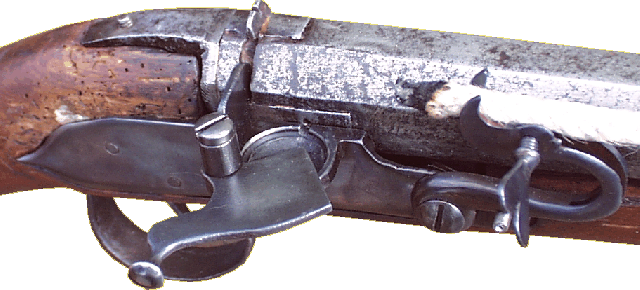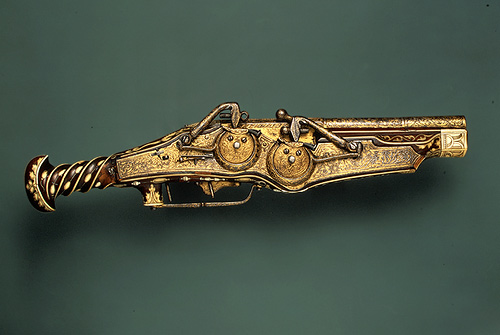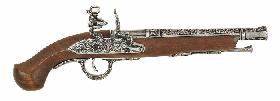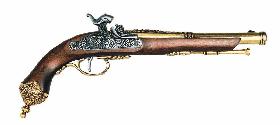|
Types
|
Main Features
|
Limitations
|
MATCH-LOCK
(14th Century) |
- Used lighted wick to fire
priming powder
- Muzzle-loaded
 |
- Wick easily extinguished
by rain
- Wick burns out
- Dangerous around gunpowder
- Clumsy
- Slow reload
|
WHEEL-LOCK
(17th Century) |
- Spring driven wheel rubbed
against a flint/iron pyrites to produce sparks
- Muzzle-loaded
- Musket and pistol type
 |
- Spring required hand winding
- Flint/iron pyrites wear
out
- Mechanism breaks
- Heavy, slow reload
|
FLINT-LOCK
(17th Century) |
- Flint snapped against a
surface to produce spark
- Muzzle-loaded
- Rifling introduced
- Paper cartridge introduced
 |
- Flints wear out or break
- Springs can fail
- Slow reload
- Number of shots limited
by number of barrels
|
PERCUSSION CAP
(19th Century) |
- Small explosive metal cap
replaced flint
- More cerain of firing
- Revolving action repeater
introduced
 |
- Slow reload
- Cap separate from powder
and bullet
|
METAL CARTRIDGE
(19th Century) |
- Primer, powder and bullet
all in one safe container
- Simple, reliable, safe
- Breech loading became easy
- Smokeless powder introduced
|
- Requires special equipment
to reload cartridge
- Source of litter
- Easy for unqualified persons
to load into a firearm
|
REPEATERS
(19th Century)
manual repeating and
semi-automatic |
- Holds and can fire multiple
shots after one loading
- Semi-automatics and full
automatics introduced
|
- More complex mechanisms
- More danger of an unused
round remaining in firearm
|




